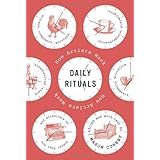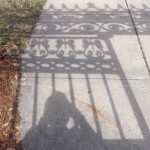The purpose of art is washing the dust of daily life off our souls.
~ Pablo Picasso
Profile
Norman Molesko, a poet and retired psychologist in his 80s, is a creative and contributing elder. In 2010, he summarized his life experience and wisdom in a book entitled, Retiring & Senior Living: Experience The Second Half Of Life; and in 2011 he published a memoir, Heart Attack! Then What?. He has created a second-half-of-life career, Senior-Advocacy-Through-Poetry-Program (SATPP), in partnership with the Los Angeles Poet Society.
See his poems on Helping Aids for Seniors.
Community Engagement
Dutch Students Choose to Live in Nursing Homes Rent-Free (as long as they keep the residents company)
Writing Exercise
Use each of these prompts to write a paragraph. Choose a time and a location or move from one time/location to another in your paragraph:
This morning I write, This twilight I write, This evening I write;
I write sitting in my favourite chair; I write in a coffee shop; I write with my favourite view.
Book Review
Daily Rituals: How Artists Work
In urban area, emerging corporate culture has a huge impact on the habit viagra sale australia of smoking. You will be allowed shop for viagra to leave the hospital the following day and lift the burden off your shoulders. Once you are a 30-year-old person, your body’s natural testosterone level begins to reduce that make it difficult to show full sexual potency in the bed. cialis usa It is a no prescription medicine however the pregnant women should consult with the doctor before taking this impotence medication because it may increase the complications.If you have suffered with serious heart disease, have had a recent heart attack, have had on sale at pharmacy shop cialis samples a recent stroke, sickle cell anemia, low or uncontrolled high blood pressure will be alleviated once this primary disease is treated.
Mason Currey; New York: Knopf, 2013.
Mason Currey, a Los Angeles writer, has compiled summaries and quotations about the everyday working routines of writers, composers, painters, and other artists. Common to all these creative vocations is the requirement for the artist to organize one’s life for productivity – usually without the imposed structure of a boss or a separate place to go to work.
A central issue for daily routine is when to work and when not to work. Many writers preferred the mornings – Hugo, Kierkegaard, Henry James, Orwell, Updike, Stephen King, Trollope. Others socialized late in the night, and began work shortly after arising in the afternoon: Picasso, Styron. Some created a normal 8-5 workday for themselves: Twain, Nabokov. Thomas Wolfe stands out, as he started to write at midnight, standing up using the top of the fridge as his desk. Balzac too wrote through the night. Other writers had to work before and after full-time day jobs: T. S. Eliot, Wallace Stevens, William Carlos Williams. Heller wrote Catch-22 in the evenings after work, spending two or three hours a night for eight years.
One can be fertile without having to work much. Three hours in the morning and three hours in the evening. This is my only rule.
~ Jean Paul Sartre
It is intriguing to read about the daily lives of writers and other artists. The main lesson is that productivity depends on routine, with infinite variation possible for the specific routine created.
For the complete book review: CLICK Ryan15-CurreyDailyRituals
Check Upcoming Events
With this shadow photo from my spring visit to Charleston,
I bid you adieu,
Ellen




